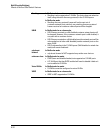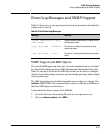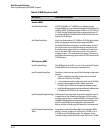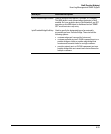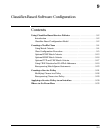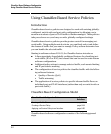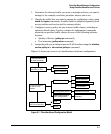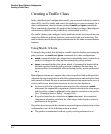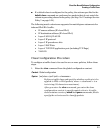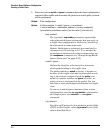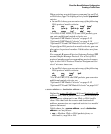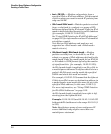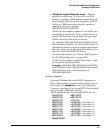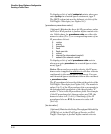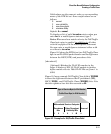
Classifier-Based Software Configuration
Creating a Traffic Class
Creating a Traffic Class
In the classifier-based configuration model, you use match criteria to create a
class of IPv4 or IPv6 traffic and select the packets you want to manage. In a
class configuration, match criteria consist of match and ignore commands.
These commands determine the packets that belong to a class. (Match/ignore
criteria are modelled on the permit/deny criteria used in ACLs.)
The traffic classes you configure can be used later in the service policies you
create for different software features, such as QoS and port mirroring. The
match criteria used in match/ignore statements are the same across software
features.
Using Match Criteria
To identify the packets that belong to a traffic class for further processing by
policy actions, use match and ignore commands in a class configuration:
■ match commands define the values that header fields must contain for a
packet to belong to the class and be managed by policy actions.
■ ignore commands define the values which, if contained in header fields,
exclude a packet from the policy actions configured for the class. An
ignored packet is transmitted without having a policy action performed
on it.
Match/ignore statements compare the values in packet fields with specified
criteria in the sequential order in which the statements are entered in the class,
until a match is found. Be sure to enter match/ignore statements in the precise
order in which you want their criteria to be used to check packets.
■ As soon as a field in a packet header matches the criteria in a match
statement, the sequential comparison of match criteria in the class stops,
and the policy actions configured for the class are executed on the packet
(see “Creating a Service Policy” on page 9-24).
■ If a packet matches the criteria in an ignore statement, the sequential
comparison of match criteria in the class stops, and no policy action is
performed on the packet.
If a packet does not match the criteria in any match/ignore statement in a class
configuration, one of the following actions is taken:
■ The packet is transmitted without a policy action performed on it.
9-4



